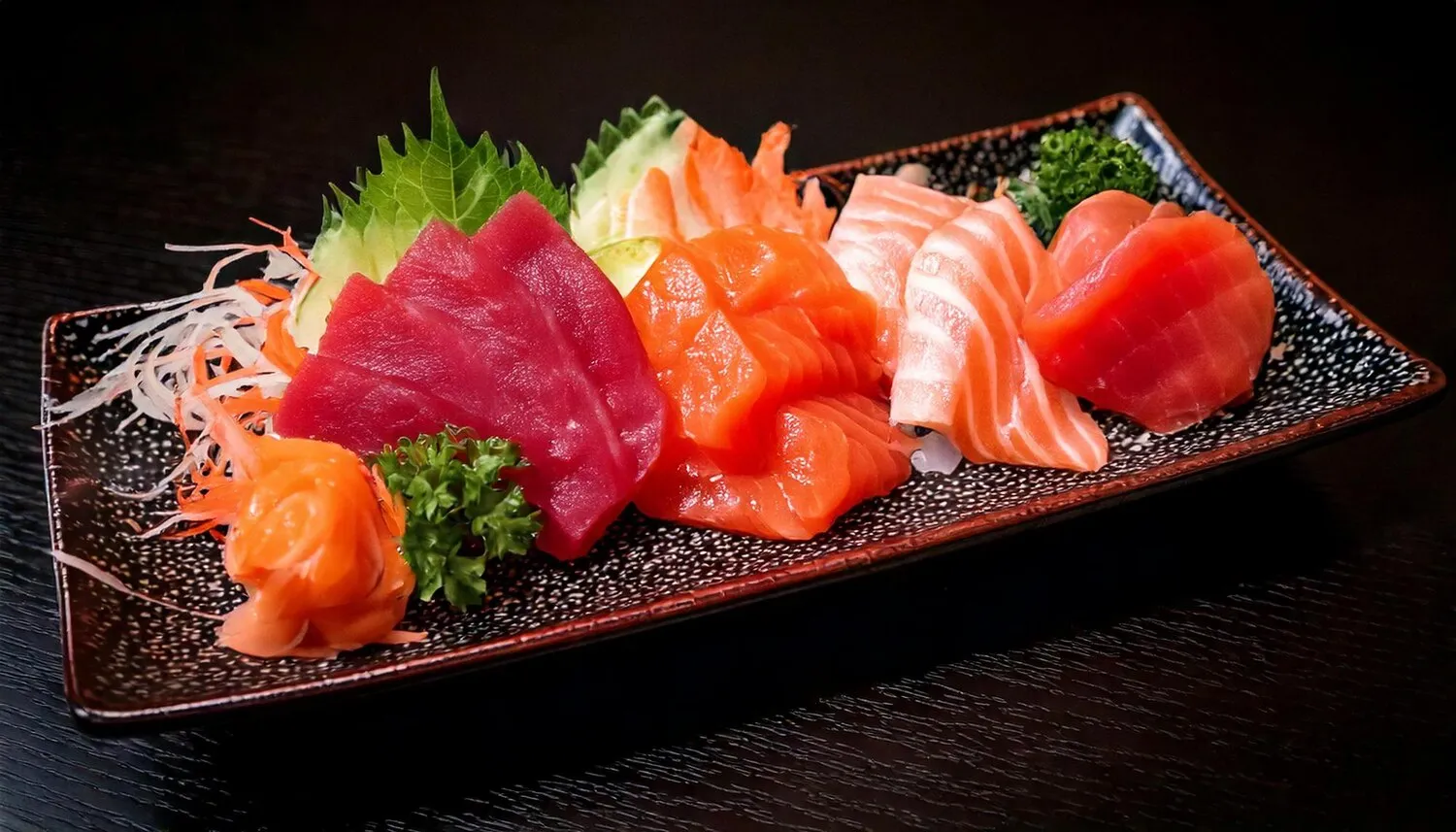
Sashimi
Thinly sliced raw fish served with soy sauce and wasabi.
Nutrition Facts
* The % Daily Value (DV) tells you how much a nutrient in a serving of food contributes to a daily diet. 2,000 calories a day is used for general nutrition advice.
Nissei Restaurante
Sashimi's origins can be traced back to the Muromachi period (1336 to 1573) in Japan. Before adequate refrigeration, the technique of thinly slicing raw fish emerged as a way to determine its freshness. It was also a practical method of preparing the fish for consumption, contrasting with earlier methods of simply grilling or boiling. The practice was heavily influenced by Buddhist beliefs that promoted vegetarianism, however the elite found ways around this restriction, with sashimi slowly rising in popularity.
Sashimi is deeply embedded in Japanese cuisine and represents a respect for both the ingredients and the art of preparation.
Freshness and Quality
The quality and freshness of the fish are paramount. Only the freshest, highest-quality seafood is used for sashimi. Chefs undergo extensive training to properly handle and prepare the fish.
Presentation
Presentation is an essential aspect of sashimi. The slices are carefully arranged to enhance their visual appeal, often incorporating edible garnishes like seaweed, shiso leaves, and daikon radish. The arrangement often reflects the seasons.
Order of Consumption
There's a traditional order to eating sashimi, starting with lighter-flavored fish and progressing to richer, more intensely flavored varieties. This allows the palate to fully appreciate each flavor profile.
Respect for the Fish
Sashimi represents a profound respect for the fish itself. It is prepared in a way that showcases its natural beauty and flavor, and no part of the fish is wasted.
Sashimi emphasizes the pure, delicate flavor of the raw fish, enhanced by subtle condiments.
The flavor profile of sashimi is primarily determined by the type of fish used. Tuna, for example, can range from mild and buttery (akami) to rich and intensely flavored (otoro). Salmon offers a creamy, slightly sweet taste. White fish like sea bream (tai) have a firmer texture and a clean, delicate flavor. Soy sauce adds a savory umami dimension, while wasabi provides a sharp, cleansing contrast. Ginger can be used to refresh the palate between different types of sashimi. The overall experience is one of textural variety and nuanced, fresh flavors.
Soy Sauce Usage
Avoid oversaturating the sashimi with soy sauce. A light dip is sufficient to enhance the flavor without overwhelming it. Never mix wasabi directly into the soy sauce – this is considered poor etiquette.
Wasabi Application
Place a small amount of wasabi directly onto the sashimi, not into the soy sauce. This allows you to control the level of spiciness and prevents the soy sauce from becoming muddied.
Palate Cleansing
Use the ginger (gari) provided to cleanse your palate between different types of sashimi. This allows you to fully appreciate the unique flavors of each fish.
Freshness Check
When preparing sashimi at home, ensure the fish is sushi-grade, which indicates it has been handled with special care to ensure its safety for raw consumption. Purchase from a reputable fishmonger.
Explore additional Raw fish dishes and restaurants
Explore Raw fishDiscover top dining spots and culinary experiences in São Vicente.
Explore São VicenteLearn more about the food culture, restaurant scene, and culinary heritage of Brazil.
Explore Brazil